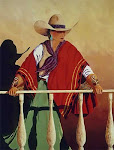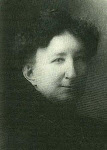Red River(1948). Directed by Howard Hawks. Cast:John Wayne, Montgomery Clift, Joanne Dru, Walter Brennan, Coleen Gray, Harry Carey, John Ireland, Hank Worden, Noah Beery Jr. and Harry Carey, Jr.
Thomas Dunson, is a man who has big dreams of running a successful cattle ranch in Texas. As he begins his journey to Texas with his trail hand and best friend, Nadine Groot, Dunson learns that the woman he loves was killed in an Indian attack. Heartbroken, Dunson and Groot ride on, only to come upon a orphaned boy named Matthew Garth, who Dunson takes under his wing.
With only a cow and a bull, Dunson and the boy cross the Red River and Dunson, quickly stakes his claim. Two Mexican men appear on horseback and tells Dunson that the land belongs to their boss. Dunson, kills one of the men and tells the other man to inform his boss that Dunson, now owns the land. Dunson, names his new ranch the Red River D and promises to add M to the brand, after Matt has earned it.
Fourteen years have passed and Dunson, now has over ten thousand cattle. After the Civil War, the price of cattle in Texas has dropped. Dunson, decides to drive his herd hundreds of miles north to Missouri, where he believes they will find a better price.
After, hiring some extra men to help out with the drive, including professional gunman Cherry Valance, they set off on their cattle drive. Along the way, a stampede started by one of the men making noise while trying to steal sugar from the chuck wagon.
The real trouble begins, when Dunson's temper affects the rest of the men. When Dunson, attempts to lynch two of the men who tried to desert the drive, Matt stands up to Dunson. With the help of the other men, Matt takes over of the drive and heads for Abilene, Kansas. Dunson, now vows to track down Matt and kill him.
On the way to Abilene, Matt and his men save a wagon train from Indians. One of the people they save is Tess Millay, who falls in love with Matt.
He leaves one night in the middle of a rain storm. Later, Tess meets up with Dunson, who is hot on Matt's trail, and tries to change his mind.
Matt reaches Abilene, and accepts a good offer for the cattle. The next morning, Dunson arrives in Abilene, with a group of men to kill Matt. The two men begin a fight for their lives, will Dunson be successful in his promise.
The film Red River, ranks as one of the great epic westerns. Montgomery Clift and John Wayne, give some of their best performances.
Fun Facts:
Texas Longhorn cattle had been nearly extinct as a breed for about 50 years when this film was made. Only a few dozen animals were available. In the herd scenes most of the cattle are Hereford crosses with the precious Longhorns prominently placed in crucial scenes.
The theme song, "Settle Down" was later used under the title "My Rifle, My Pony and Me" in Rio Bravo, another John Wayne western.
Five dams were built to bring the San Pedro River in Arizona, where the crossings were shot, to flood stage.
In a 1974 interview, Howard Hawks said that he originally offered the role of Thomas Dunson to Gary Cooper but he had declined it because he didn't believe the ruthless nature of Dunson's character would have suited his screen image.
Cary Grant (who had worked with Howard Hawks on Bringing Up Baby and Only Angels Have Wings) turned down the role of gunslinger Cherry Valance, a part that was subsequently minimized in the final film.
During production, many members of the cast and crew caught illnesses and injuries. Howard Hawks was hospitalized for several days after being stung by a centipede. John Wayne caught a severe cold. Joanne Dru suffered from influenza.
The only film that father, Harry Carey, and son, Harry Carey Jr. appeared together in.
Joanne Dru (January 31, 1922 – September 10, 1996). After moving to Hollywood, she found work in the theater. Dru was spotted by a talent scout and made her first film performance in, Irish Rose (1946).
She was cast often in western films such as Howard Hawks's, Red River (1948), and John Ford's, She Wore a Yellow Ribbon (1949), and Wagon Master (1950).
She gave a well-received performance in the dramatic film, All the King's Men (1949) and co-starred with Dan Dailey in, The Pride of St. Louis (1952).
She performed in, Thunder Bay (1953) and then a Martin and Lewis comedy, 3 Ring Circus (1954). Her film career faded by the end of the 1950s, but she continued working in television, as "Babs Wooten" on the 1960-61 sitcom, Guestward, Ho!. She performed for the rest of the 1960s and the first half of the 1970s, with one feature film performance, in Sylvia (1965).




















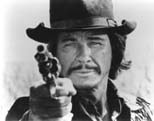
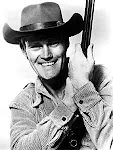


























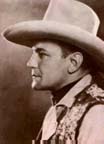





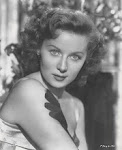








.jpg)















